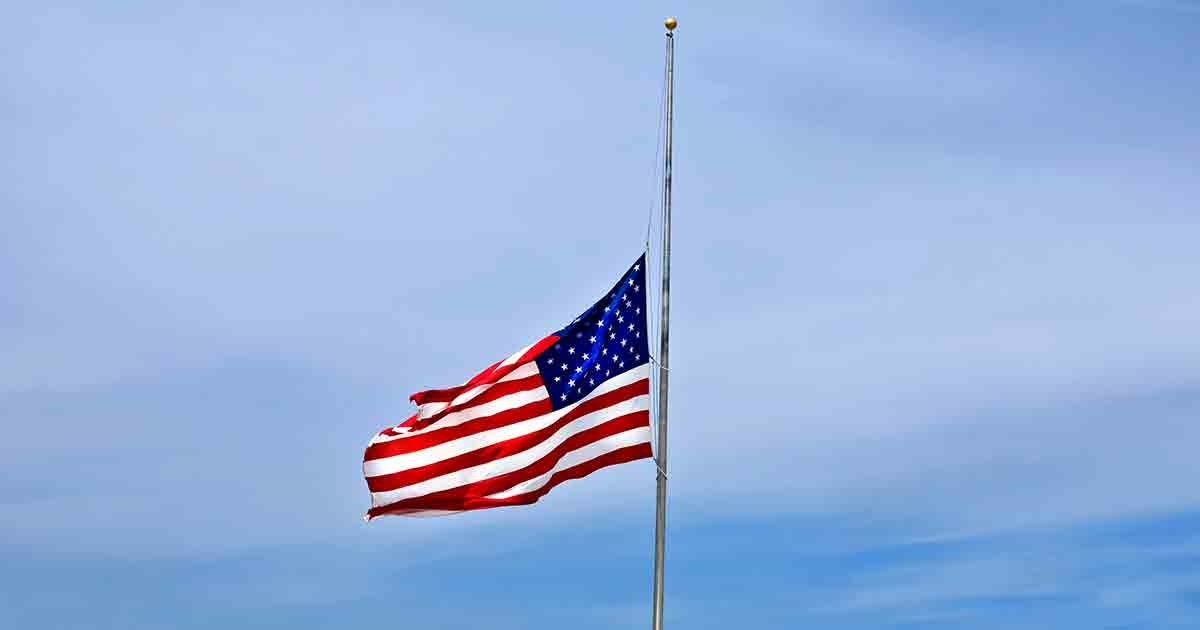(New York) – US state laws fail to meet international child rights protection standards, with most of them failing to protect children from child marriage, dangerous child labor, harsh prison terms, and abuse, the report said. Human Rights Watch today. Human Rights Watch gave 20 states a failing “F” grade, and 26 a “D.” No state received a “B” or “A.” New Jersey, Ohio, Iowa, and Minnesota were the only states that received a “C” grade.
A new interactive map by Human Rights Watch identifies 12 state-specific laws out of all 50 states based on the principles of the Convention on the Rights of the Child, the first international agreement on children’s rights. The laws deal with four issues: child marriage, physical torture, child labor, and child justice. The United States is the only country that failed to ratify the agreement, which was ratified by 196 countries.
“For people who believe that America is taking good care of its children, this assessment is disturbing,” said Jo Becker, director of children’s rights at Human Rights Watch. “When it comes to child marriage, hazardous child labor, harsh prison sentences, and child abuse, most US states have very poor laws. State policymakers should act quickly to protect their children.”
The Convention on the Rights of the Child, adopted by the United Nations in 1989, addresses children’s rights to education, health, decent living conditions, freedom of expression, protection from violence and abuse, among others. many rights.
In the United States, most of the issues addressed by the Convention are left to the jurisdiction of the states, not the federal government, and there are differences of opinion from state to state. States with the worst scores include Mississippi, Wyoming, Oklahoma, Georgia, and Washington.
Child marriage is legal in 43 states. According to Unchained at Last, an organization dedicated to ending child and forced marriage, more than four million children, some as young as 10 years old, were married in the United States between 2000 and 2010. to 2018, the year Delaware became the first US state to ban it. child marriage. On July 28, 2022, Massachusetts became the seventh state to set the minimum age at 18, with no exceptions, in line with international standards. Child marriage is associated with early pregnancy, lower educational attainment, and increased risk of violence and poverty.
No US state has banned all corporal punishment of children, and 23 states allow it in public and private schools. About 160,000 children are bullied in schools each year, according to data from the US Department of Education. Black children and children with disabilities are more likely to be physically abused in schools. Only two states, New Jersey and Iowa, prohibit corporal punishment in both public and private schools.
Capital punishment in juvenile detention centers is legal in 16 states. The Convention calls for the protection of children from “all forms of physical and mental violence,” and United Nations experts say the Convention “does not allow any It is not an appropriate measure of child abuse.” Life imprisonment has been found to be ineffective in modifying children’s behavior and detrimental to children’s development.
The United States remains the only country in the world that sentences children under the age of 18 to life without parole, which is prohibited by the Convention. According to the Campaign for Fair Juvenile Sentencing, 25 states have banned these sentences. As of early 2020, more than 1,400 people are serving life without parole in the United States for crimes committed as children, in some cases as young as 13. 62 percent of those sentence to life without parole for juvenile prisoners. Crime is Black, though they make up only 14 percent of America’s youth population.
International children’s rights statistics show that no child should be prosecuted as an adult. Research shows that youth who are not tried as adults are less likely to commit new crimes. However, in the United States, approximately 53,000 juveniles are tried in adult courts each year.
No US state prohibits the prosecution of juveniles in adult courts, and only 28 states have an age limit on the return of juveniles to adult court. No state sets the minimum age of jurisdiction for juveniles at at least 14, the international standard, and more than 30,000 children under 12 are referred to juvenile court each year. Only five states, California, Colorado, Massachusetts, Maryland, and Nebraska, set minimums higher than 10 years.
Fewer protections in labor laws and federal regulations in the United States fail to protect children working in agriculture, the most dangerous industry for child labor. Federal law allows children to work as farm laborers at a younger age, for longer hours, and in more dangerous conditions than any other sector. A 2018 U.S. government study found that children working in agriculture account for more than half of all work-related deaths, even though they represent only one-third of working children.
For its scorecard, Human Rights Watch chose to focus on four issues: child marriage, corporal punishment, child labor, and juvenile justice. These four categories were selected based on a preliminary review of jurisdictions where the United States does not adhere to the Convention on the Rights of the Child at the federal level and where the Convention establishes age standards or otherwise to compare specific state laws. front. The assessment does not attempt to comprehensively analyze all the rights covered by the Convention.
Human Rights Watch developed its map in collaboration with several partner organizations, including Unchained at Last, which focuses on child marriage; The End of Solidarity, which follows corporal punishment laws; The Campaign for Fair Juvenile Sentencing, which works to end life without conviction for juvenile offenders; Children’s Human Rights, which works on juvenile justice in the United States; and government lawyers and the Child Labor Coalition, both of which work on child labour.
“State laws leave millions of children at risk for child marriage, violence, and abuse,” Becker said. “While some states are better than others, all states can improve their laws to protect children and help them thrive.”
Human violence affects students in many ways – denial of rights such as freedom of speech and the right to practice the religion of their choice, and often psychological, emotional torture and relational problems including fear of teachers, inferiority complex you and the poor. relationship between people…
What are the 10 rights of a child?
Rights of Children in India – Right to Education and Health
- Right to Life: • Birthright. This may interest you : Genetic risk of stroke? A healthy lifestyle can help. • Right to minimum standards of food, shelter and clothing. …
- Right to Protection: • The right to protection from all forms of violence. …
- Right to Participation: • The right to freedom of expression. …
- Developmental rights: • The right to education.
What are your basic rights as a child? Children’s rights are economic, social and cultural rights, such as the right to education, the right to a good life, the right to health and so on. Children’s rights include individual rights: the right to live with one’s parents, the right to live with one’s parents, etc. the right to seek education, the right to benefit from protection, etc.
What are the 5 most important children’s rights?
Children’s rights include the right to health, education, family life, play and recreation, a decent standard of living and protection from abuse and harm. See the article : United States: In Major Win, Kansas Votes Against State Abortion Ban. Children’s rights include their development and age-appropriate needs that change over time as a child grows.
Why should children’s rights be protected?
Effective protection is important for the well-being of children because, as vulnerable people, they are more vulnerable to bullying, abuse, discrimination and violence. See the article : 10 Best “Couldn’t Put Down” Books to Get You Out of a Reading Slump.
Why is it important to protect children’s rights? The healthy development of children is essential for the future survival of any society. Because they are still developing, children face more challenges than adults – to poor living conditions such as poverty, inadequate health care, nutrition, clean water, housing and environmental pollution.
What are the four major rights?
These are the right to equal education, the right to work and equal pay, the right to justice under the law, the right to participate in making laws through the use of a ballot.
What are the four basic rights listed in the letter written by Eleanor Roosevelt?
What are our 4 basic rights?
As America entered the war these “four freedoms” – freedom of speech, freedom of worship, freedom from want, and freedom from fear – symbolized America’s struggle and hope in the following years. to the people who are tired of war because of war. they know they are fighting for freedom.
What are the human rights in the Constitution?
Every human being has the right to life, liberty and security. Right to life, liberty and security of privacy. Phase II. All people are equal before the law and have the rights and duties established in this declaration, regardless of race, gender, language, creed or anything else.
What does the Constitution say about children’s rights?
This section gives children the right to a name, citizenship and some form of care. Children need food and shelter, and should be protected from abuse, neglect and damage. A child should not work when he is underage, or do work that will hinder his education or development.
Does the Constitution affect children? Children are generally afforded the rights enshrined in the Constitution. The Equal Protection Clause of the 14th Amendment is said to apply to children, but it excludes the unborn. There are both state and federal child rights laws.
What are the 5 most important children’s rights?
Children’s rights include the right to health, education, family life, play and recreation, a decent standard of living and protection from abuse and harm. Children’s rights include their development and age-appropriate needs that change over time as a child grows.
How does the 14th Amendment protect parental rights?
The right to raise children as parents choose The Court explained that the Fourteenth Amendment’s provisions protect this freedom, including the right to marry, establish a home, and raise children.â



